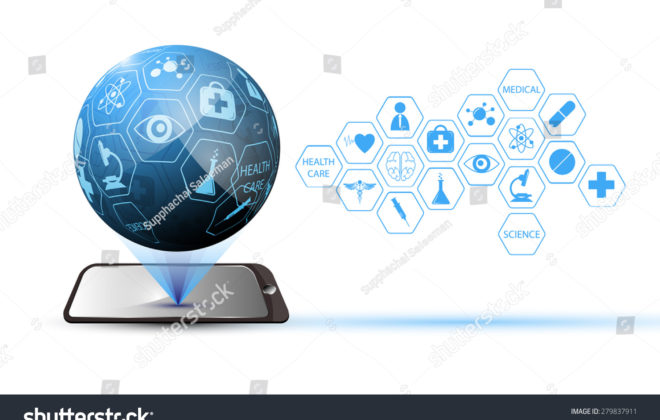The Many Benefits of Speech Recognition Technology In Healthcare
“Hey Siri”, “OK Google” – The world is not new to voice recognition, also called as speech recognition technology (SRT). It refers to the technology that is capable of converting the spoken words to machine-readable formats. Just like in fiction stories, today you can talk to your devices and they act on your command. As most of the speech recognition platforms demonstrate accuracy of over 95%, it is no surprise that comScore predicts that by 2020, over 50% of all searches will be voice searches. Beyond mobile devices used by individuals, voice recognition has found a solid foothold in enterprises as well – especially for enhancing customer service and combating cybercrime.
Voice recognition technology is not new to healthcare. For many years, doctors have been using this technology for transcribing their clinical notes. However, as more and more technologies such as artificial intelligence, machine learning, and natural language processing are entering the healthcare scenario, the voice recognition technology can phenomenally transform the way doctors, nurses, and patients interact with each other.
At the APHM event in August 2018, HATI International demonstrated how doctors could benefit from voice-enabled EMRs. Reports show that doctors spend over 40% of their workday in data entry and document over 7 million words in a year. Clearly, this is not the best use of doctors’ time. They should be spending more time with their patients and giving them more face-time. That’s where voice recognition technology can play a role. Our demonstration of voice-operated EMR garnered great interest from the doctors visiting our booth.
Let us take a look at the many benefits of this technology –
Better Productivity
This seems to be the no-brainer. Studies have also shown that physicians believe that they can see more patients (at least 1/3rdmore patients) if they use voice recognition technology instead of entering data into an EMR template. Not only for the physicians but in other hospital departments as well, this technology has a vital role to play. A study of 20,000 radiology examinations showed with the use of SRT, there was a reduction of 81 percent in report turnaround time leading to thousands of dollars of annual savings.
Less Medical Errors
Hospitals using voice recognition technology see a significant improvement in the reliability and accuracy of electronic health records. Most of the medical errors tend to happen during clinical hand-off when a patient is referred to another physician. During this hand-off, if the entire information, thought process and actions are not transferred appropriately, that can increase the chances of medical errors. With voice recognition technology, all this information is adequately and accurately transferred between the physicians thereby reducing the chances of medical errors.
Greater Mobility
There are several cloud-based voice recognition apps using which, doctors can give the dictation on the go, from anywhere, anytime – leading to the more efficient use of their time. Doctors can record their notes immediately after a patient meeting when the conversation is still fresh in their mind. With this, physicians and clinicians can attend more patients and spend lesser time in making reports. That apart, voice notes can also be greatly useful for recording thoughts and ideas while on the move.
Adherence to Documentation
Doctors have to spend a lot of time in the proper documentation so as to ensure that the insurance companies have sufficient and all the required information to process the claim correctly. In the absence of adequate documentation, the patients can suffer by not getting the desired insurance coverage. With voice recognition technology, doctors can keep accurate and complete records without having to spend a lot of time in that.
Better Decision-Making
Voice recognition technology makes critical information readily accessible and available for use by physicals and clinicians. Armed with the right information, doctors can make more informed and accurate decisions.
Without a doubt, voice recognition technology offers tremendous potential in healthcare –
- It can be effectively used in examination rooms to capture clinical notes and provide clinical decision support
- In the sterile environment of operating rooms, doctors can effectively communicate using this touchless interface
- People in recovery rooms usually have restricted mobility. Using voice recognition technology, they can adjust the room temperature, lights, seek nursing help, order food, and overall maintain better control over the environment around them.
I understand that the technology still has some minor kinks to clear regarding handling ambient noises and various accents, but considering the vast potential it offers, I am sure these are very small issues which can be easily taken care of. I am personally very excited about this technology and would love to hear experiences of people using it.




